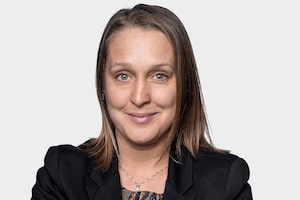A tree is planted by a worker for Ecosystem Restoration Associates in Maple Ridge, B.C.JOHN LEHMANN/The Globe and Mail
Andrea Barnett left university at 22 with an undergraduate degree in political science and philosophy. She was also saddled with $26,000 in student-related debt.
Because her parents earned too much money, Ms. Barnett did not qualify for government student loans. Instead, her parents co-signed for her to get a student line of credit with a big Canadian bank and agreed to pay the interest until she graduated. Unlike with government loans, where students don't pay anything until after they have completed school, banks require monthly payment on the interest while in school, although repayment of the principle amount of the loan does not start until after graduation.
"I wasn't a big spender," Ms. Barnett said. But during her five years at the University of Victoria, tuition, living expenses and other costs steadily added up. When she finished school, she decided that instead of chipping away at her mountain of debt, like many people do, she needed to tackle it all at once.
"I did an arts degree, so there was no clear career path for me," the Kamloops, B.C., native said. "And I knew that moving forward, if I wanted to do something like go to grad school, it would be prohibitive. I had to get this debt under control."
Relying on her years of summer work experience in silviculture, she spent the year and a half after graduation bouncing between remote locations in British Columbia and northern Alberta, taking back-breaking jobs such as tree planting, slash-pile burning and forestry brushing and spacing.
Forestry-related work is tough but it can be lucrative. Ms. Barnett estimates that she was earning between $250 and $300 a day. But the key, she says, is that "living in the bush" freed her from having to pay for things like rent, an Internet connection and a gym membership.
"The nature of these outdoor labour jobs is that you avoid a lot of costs – and you reduce living expenses. You are in the middle of nowhere and your accommodation is provided," she says. "So I pocketed almost all of the money I was making."
During the harshest winter months, Ms. Barnett's parents let her periodically crash at their home. She also spent part of that winter working on a cattle ranch. But as soon as the weather improved, she went back to tree planting.
"It was not easy work. There were parts of it I hated, but I knew it was the shortest path to being debt-free."
By July of the next year, a year and three months after graduating, she repaid the last of her undergraduate debt. "I remember feeling a real sense of pride, calling my dad and being so excited. It was almost like figuring out how to win at something," she says.
Alex Usher, a Toronto-based higher education consultant, said $26,000 is the average amount of debt for a student leaving university these days. It takes most graduates seven years to pay it back, he said, although one out of every six students repays in two years. "I suspect that in these cases, the parents or grandparents are stepping in to help," he added.
Because Ms. Barnett knew she might have to borrow again in the near future to go to graduate school, it made sense for her to eliminate her student debt in one go, Mr. Usher said. "If you are not planning to borrow again soon, there is no need for this kind of rush," he said, noting that for someone who has a good job, the monthly repayment amounts are often manageable.
Ms. Barnett agrees the path she took is not for everyone. "My sister studied to be a nurse so she had a logical career to step into. I did not have a logical path forward, so I wanted to nip my debt in the bud."
Annie Kvick, a Vancouver-based certified financial planner and money coach, says eliminating all that debt is liberating. "She created a solid foundation to stand on, so if she wanted to, she could now start saving for a car or a house or a vacation. Money that would have gone towards debt repayment can go towards those things."
For the many people struggling with debt who are unable to drop everything and head off into the bush, the key is to come up with a realistic plan to pay it off. "These people should take care of a little bit of that debt each month, then also set aside money to reward themselves. Everyone needs to see a light at the end of the tunnel."
Eventually, Ms. Barnett did go into debt again – for graduate school. She kept her full-time job as a policy analyst at a non-profit conservation group and, at the same time, did a masters in public administration. In that case, however, she was earning a good salary that covered regular steady debt payments.
Now 31, she continues to work as a policy analyst and lives debt-free with her husband on a cattle ranch in B.C.
Her early experience with debt has shaped her relationship with money and, arguably, made her a financially savvy adult. "If there is a cost that presents itself, I won't spend that money unless I have a set plan on how to pay it off."
To share your own debt-reduction story, click here.
 Roma Luciw
Roma Luciw